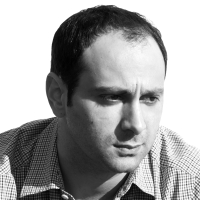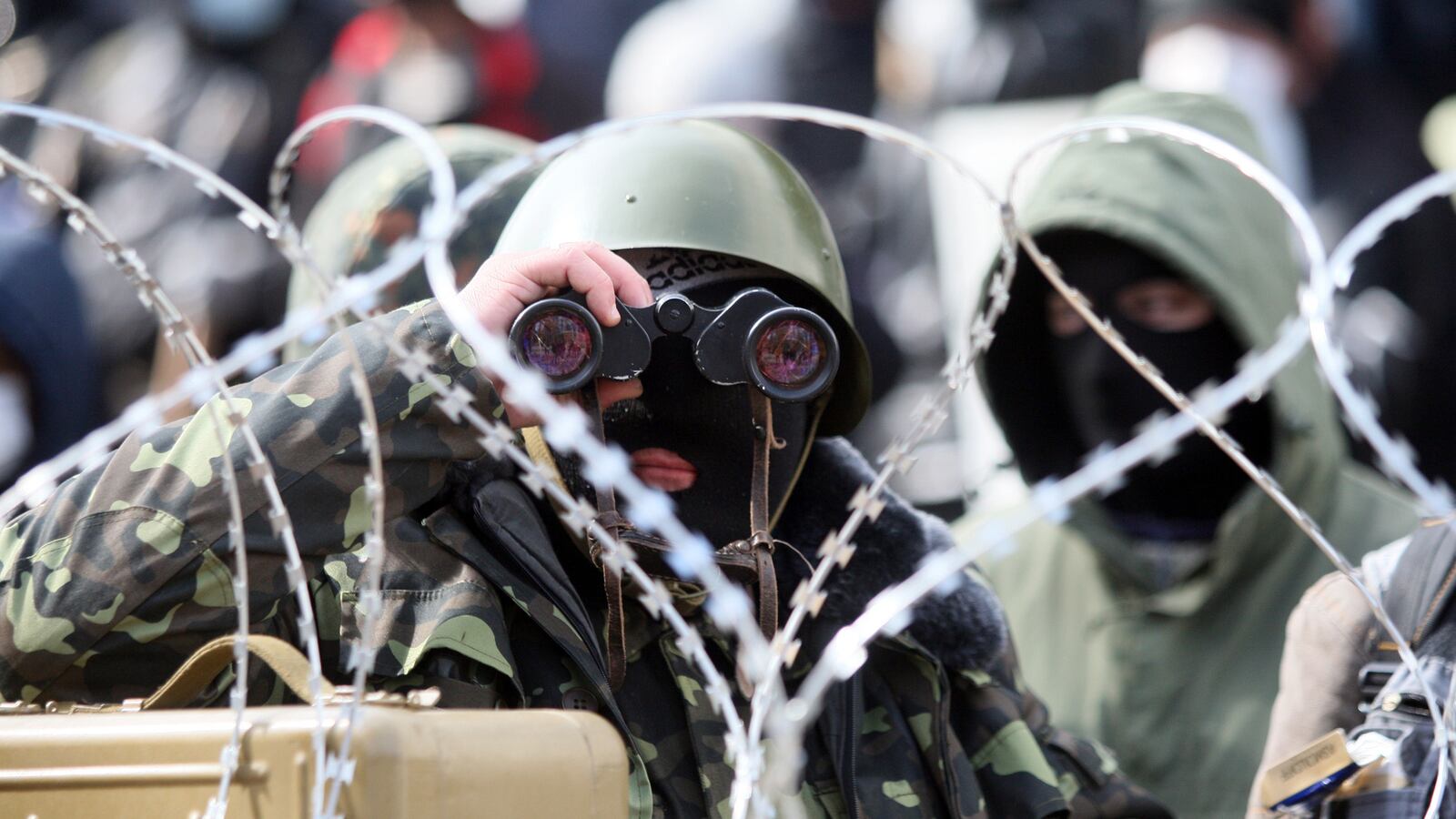DONETSK, Ukraine — The Ukrainian government in Kiev has given all protestors occupying government buildings across the country 48 hours to withdraw or face being forcibly evicted. “For those who want dialogue, we propose talks and a political solution,” Ukraine’s interior minister, Arsen Avakov, announced on Wednesday. “For the minority who want conflict, they will get a forceful answer from the Ukrainian authorities.”

The threat has been greeted with derision here around the barricaded city hall festooned with Russian and Soviet flags. “If the criminals from Kiev come to try to take the building we will fight them and they will lose,” said Uri, who is 32-years old and unemployed. A boxer and a bear of a man drinking with his buddies, Uri said he could beat Vladimir Klitschko, the former world heavyweight champion who has become a leading pro-Europe politician in Kiev. “He is old and I am young,” says Uri, punching the air wildly for several seconds. This brings roars of approval from his friends.
Unfortunately for Kiev, its problems are greater than Uri. Tens of thousands of Russian troops reportedly are poised across the border and ready for war. To “protect” the Russian-speaking people of Ukraine, Russian President Vladimir Putin leaves open the possibility of an outright invasion. Whether he will until emergency talks with the European Union, the United States and Ukraine scheduled for next week is impossible to say.
Meanwhile the protestor “self-defense groups”—the name given to the gangs of men dressed in combat fatigues and armed with sticks and bats—are getting more organized. They are the hard core that have been guarding the building and they are expanding their activities.
I leave the city center and drive a few kilometers outside Donetsk where I am flagged down at a police roadblock. As I step out of the car I notice another, less official roadblock built from tires, and without police interference. About a dozen self-defense militia run into the road as a large truck appears, forcing it to stop before making the driver get out and searching it haphazardly. The roadblock is perfectly located on the H20, one of the highways into Donetsk. As tensions have risen it is clear that the self-defense forces are trying to monitor who and what comes in and out of the city.
Their vigilance may well be needed in the coming days. After the police send us on our way we drive another ten kilometers out of Donetsk until we turn a corner and run into a line of heavy artillery—ten large army trucks, each towing a howitzer—parked up on the grass along a side road. Several police cars are dotted alongside the column while three or four policemen stand around on the grass watching the vehicles.
The trucks’ markings are unclear but their raggedy look and the presence of local police guarding them suggests they are Ukrainian. This is the first sign of a military presence I have seen in the Donetsk region and it fits with the increasingly voluble threats that the government is getting ready to use force to restore order to Eastern Ukraine. It will be a tough task and will likely prompt yet more Russian aggression or subversion. But for now the people wait.






